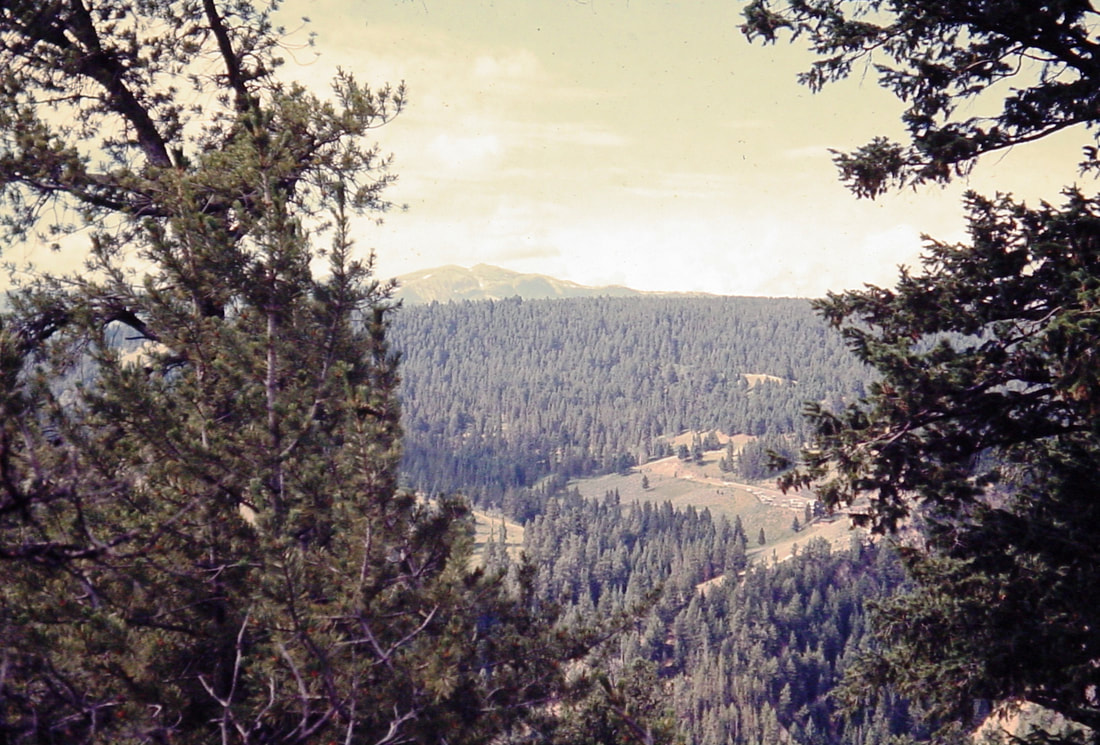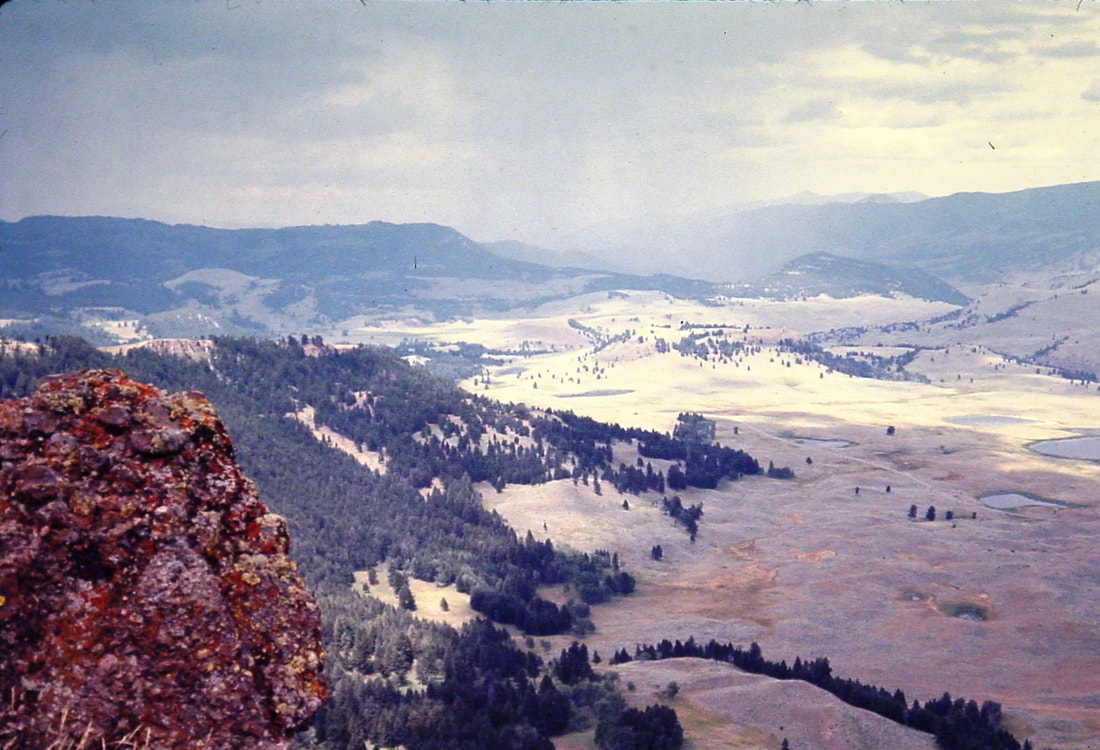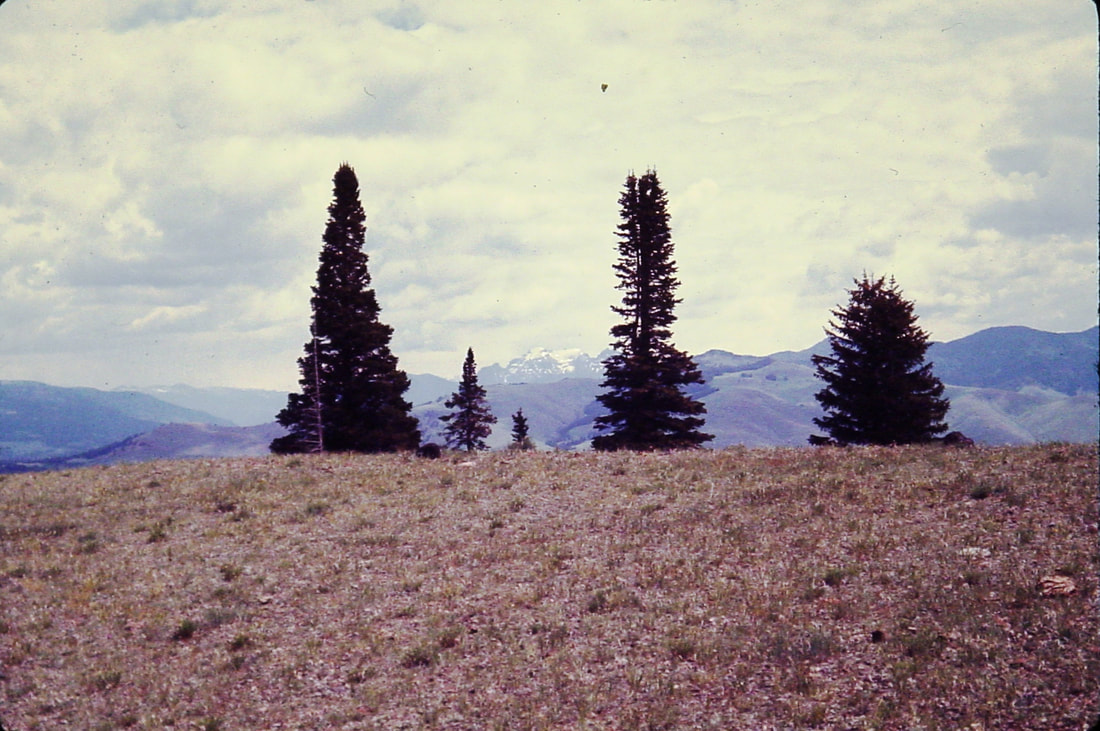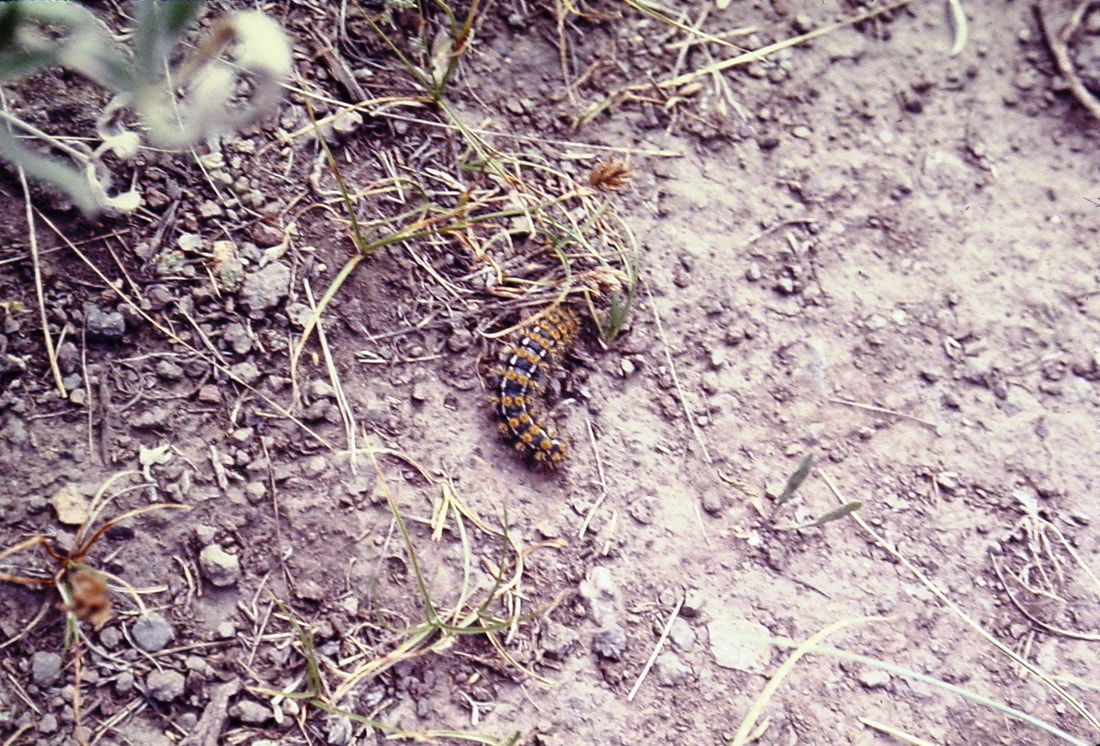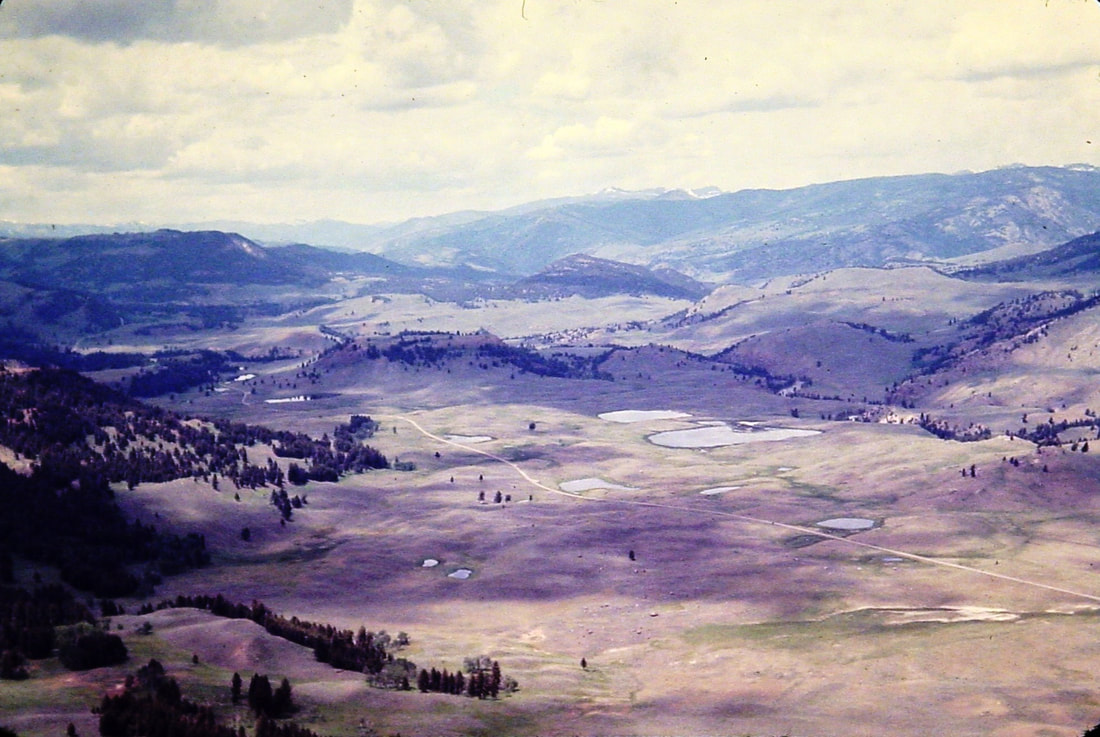|
By JOE CARTWRIGHT
Special to North Palm Beach Life Photos by Joe Cartwright Yellowstone has had major eruptions at least three times in the past, and each eruption buried trees and other plant life beneath rock and ash. In some cases, the conditions were favorable for forming petrified wood, where minerals replace the cell structure of the buried plant life. Yellowstone has a collection of petrified trees that are still standing upright, with their petrified roots still in the ground. It is highly unusual for trees to be petrified while still standing. Normally, the force of an eruption blows all the trees to the ground. When Yellowstone first opened to tourists, two of these still-standing petrified trees were adjacent to a major road. Many of those first tourists were avid souvenir hunters. Now, there is one standing petrified tree there with a large fence around this remaining specimen. The other tree was literally picked apart and carried off by souvenir hunters. The best standing petrified trees, though, are located a few miles from the nearest road in an area in the northeastern section of Yellowstone known as Specimen Ridge. There is a Specimen Ridge Trail that has beautiful views and leads nowhere near any of the best specimens of Yellowstone’s “fossil forest.” I had to find this out the hard way: Twice I hiked the Specimen Ridge Trail and never located any petrified trees on my own. The second time, though, I was hiking with a partner and after wandering the Ridge for an hour or two with no petrified trees in sight, we spotted the ranger-led hike on a nearby ridge. When we caught up with the ranger’s group we found out two things: (1) the rangers knew exactly where the best specimens stood and (2) they deliberately took varying routes there to prevent establishing a trail for free-lancers like us. The most impressive sample stood right on the edge of a cliff and a small path led under the petrified roots of the tree. I could actually stand below the tree and look up at the petrified roots still in the ground. Although the cell structure of the tree has been replaced by minerals, enough structure is there for scientists to determine the what kind of trees we were seeing. I asked the ranger what type of trees they were and he said that they were actually redwoods – a tree that lives nowhere near Yellowstone in these days. The climate must have been very different in that ancient time. If you want to hike a beautiful trail with sweeping vistas, by all means hike the Specimen Ridge Trail. If you want a strenuous trail with beautiful views and a unique destination, then sign up for the ranger-led trip and you won’t be sorry. You may be aching afterwards, but you won’t be sorry. |
- Home
- Cruise/Travel
- Gigi in the 561
- Blogs
- Video
-
Explore
- Snaps >
- Island Destinations
- October Odyssey >
- Pam - Traveling in Style
-
Road Trip!
>
- Road Trip! -- Tucumcari, New Mexico
- Road Trip! -- The Painted Desert
- Road Trip! - Sedona, Arizona
- Road Trip! - Sedona Wineries
- Road Trip! Tonto Natural Bridge State Park
- Road Trip! - Mogollon Rim
- Road Trip! - Verde Canyon Railroad
- Road Trip! - Jerome, Arizona
- Road Trip! - California
- Road Trip! - Palm Springs Celebrity Tour
- Road Trip! - Palm Springs Aerial Tramway
- Road Trip! - Festival in Palm Springs
- Road Trip! - Willcox, Arizona and Apple Annie's Orchard
- Road Trip! Willcox Wineries
- Road Trip! Chiricahua National Monument
- Road Trip! Tombstone, Arizona
- Tombstone, Part Two
- Road Trip! - Epilogue
-
Traveling With Joe
>
- Beartooth Highway
- North Cascades National Park
- A Visit to the Philippines
- Grand Canyon National Park
- Glacier National Park
- Yellowstone National Park
- Hiking in Bear Country
- Crater Lake National Park
- Albuquerque Balloon Fiesta
- The Kerrville Folk Festival
- Building Hope in the Rio Grande Valley
- Yellowstone Camping Tales
-
Unknown Yellowstone
>
- Unknown Yellowstone - Heart Lake
- Unknown Yellowstone - Summit Lake
- Unknown Yellowstone - Shoshone Lake
- Unknown Yellowstone - Grizzly Lake
- Unknown Yellowstone - Riddle Lake
- Unknown Yellowstone - Pelican Cone
- Unknown Yellowstone - Mt. Washburn
- Unknown Yellowstone - Specimen Ridge
- Unknown Yellowstone - Avalanche Peak
- Unknown Yellowstone - Divide Creek
- Contact
- Search
|
© COPYRIGHT 2024 ALL RIGHTS RESERVED.
|
